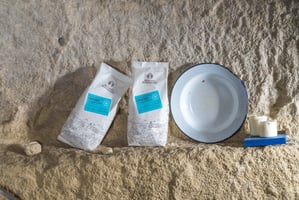In the landscape of Italian bread making, where the age-old art has always reigned supreme, we are...
Semolina vs Remilled-Semolina - What is the difference?

Often our customers, we are asked what is the difference between semolina e remilled semolina.
Before giving definitions it is good to take a small step back....
If we are talking about semolina then we are talking about products derived exclusively from the milling of durum wheat!!!
Flours, on the other hand, are derived from the milling of soft wheat, the so-called white flour, which can be of different types according to the degree of refining: whole wheat flour, type 2 flour, type 1 flour, type 0 flour, and type 00 flour the most refined.
From durum wheat, semolina, remilled semolina, semolina and whole-wheat semolina are mainly obtained.
Durum wheat semolina is the main ingredient for the preparation of pasta; it has a deep yellow color and a thicker grain size, to mean it feels almost sandy to the touch. It is obtained from the noblest part of wheat.
Semolina rimacinata, on the other hand, is used for the preparation of breads, flatbreads and leavened goods. It has a very fine grain size and is lighter yellow in color than semolina. It is called reground because it undergoes an extra grinding step!!!
The technological differences between these two products mean that they have extremely different uses. It is difficult to think of making a leavened product with semolina because it would turn out very "heavy," not alveolate. It is possible, on the other hand, to make fresh pasta using remilled semolina even though we would get a pasta with less texture.



